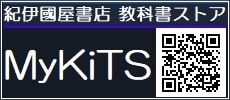- ホーム
- > 洋書
- > 英文書
- > Science / Mathematics
Full Description
Drawing together expertise in this multidisciplinary field, this volume assists in a better understanding of the issues relating to environmental design. Tribology in Environmental Design 2000 provides an excellent opportunity to present to the product designer the wider tribological implications on the whole life-cycle of the product. This includes manufacturing processes and the product's use phase, which need to be considered if companies are to satisfy environmental criteria. TOPICS COVERED INCLUDE: - Life-orientated Products - Product Life Design Tool - Life-cycle Assessment for Optimised Products - Surface Engineering - Lubricants - Test Methods - Advanced Materials - l - Analytical Studies - Advanced Materials - ll - Author's Index
Contents
Part 1 Life-orientated products: influence of tribology on machine design methodology; search and evaluation heuristic for ecological optimized products; design for tribology and design for environment - two goals, one way; the development of surface topography during wear of matt finish femoral stems; increase of life cycle due to application of surface coating methods. Part 2 Product life design tool: towards "CAD for wear control"; the use of wear information for the development of disassembly-friendly products; optimum design concept of sliding bearing; life-cycle design - economical and ecological decision making. Part 3 Life-cycle assessment for optimized products: environmental consequences of tribological issues in mechanical systems using replacement refrigerants; life-cycle studies on different natural fibre reinforced components and thermoplastics for automotive parts. Part 4 Surface engineering: HVOF coatings to combat fatigue - the quest continues; wear resistance of steels nitrided by nitriding using supersonic expanding plasma jets; fretting behaviour of ion nitrided 34NiCrMo6 steel; assessing the ability of metal-on-coating pairs to modify frictional responses with application to the cutting process; three-dimensional functional parameters for characterization of the bio-engineering surface at different stages of wear; laser remelting of 75/25 Cr3C2/NiCr coatings. Part 5 Lubricants: the influence of the environmental process conditions on the machining of aluminium alloys; the suitability of food grade cooking oil to act as a biodegradable chainsaw lubricant in forestry and arboriculture; wear and friction in boundary lubricated contacts. Part 6 Test methods: abrasion test to improve lifetime of excavator teeth; application of the method of caustics to rolling contact fatigue; the consequences of aggressive lapping processes on the surface integrity of HIPed silicon nitride bearing balls; behaviour of three families of stainless steels subjected to tribological conditions of abrasion and erosion. Part 7 Advanced materials 1: mechanics of metal forming; elaboration of cast Fe-Cr-Cu-C system composites for sliding friction; study of the constitutive law for a polycrystal and analysis of rate boundary value problem in finite elastoplasticity. Part 8 Analytical studies: porous metal bearing temperature problem; boundary element analysis of surface ring crack in silicon nitride bearing elements; wear of worm gears - theory and experiment. Part 9 Advanced materials 2: wear mechanisms in a graphitic metal matrix composite A356 Al-10per centSiC-4per centGr; effective-cluster simulation of polycrystal plasticity; influence of microstructure on contact fatigue of silicon nitride; tribological behaviour of polyethersulphone-steel pairs.















